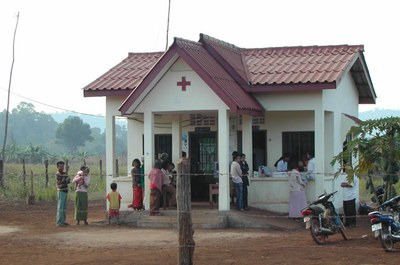A Field Guide: PHE, SDG, and M&E

By Scott Moreland, PhD, MEASURE Evaluation
It probably was one of those ah-ha moments that change things—when conservation experts realized that to protect the environment and conserve bio-diversity, one needs to intervene with human behavior. You can’t just put a fence around an environment you want to protect.
People can be a major threat to the environment. Human health and well-being are inextricably linked to the environment—think nutrition and livelihoods. And, so, working in tandem to address human needs and environmental issues is more effective than pursuing these aims in isolation. Thus were born programs called population, health, and environment (PHE) projects that integrate human and conservation imperatives.
 Family planning—the P in PHE— enters the equation because slowing population growth reduces pressure on the environment while providing household-level benefits to families. Health programs—the H in PHE—can better reach communities in remote areas by partnering with environmental organizations that are already there. And E—environment—benefits because enlisting community members as worthy helpmates with a stake in the outcome improves impact and sustainability.
Family planning—the P in PHE— enters the equation because slowing population growth reduces pressure on the environment while providing household-level benefits to families. Health programs—the H in PHE—can better reach communities in remote areas by partnering with environmental organizations that are already there. And E—environment—benefits because enlisting community members as worthy helpmates with a stake in the outcome improves impact and sustainability.
PHE programs are no longer new, so, how are we doing? As always, measurement of progress is important and needs some type of codification. Conservation projects tend to be rural, community-based, and complex with many dynamic elements that shift over time. In addition, conservation projects—with some exceptions such as Pathfinder and Blue Ventures—historically were not accustomed to monitoring and evaluation (M&E) requirements that health projects typically follow.
 Projects meant to change human behavior also take on complexity—offering an array of disparate household-level benefits in health, nutrition, water, and sanitation with the attendant tangle of M&E indicators. Because of advancements in the field of M&E and with more scope and sophistication of PHE programs, those in the field will want to know of revised indicators in A Guide for Monitoring and Evaluating Population-Health-Environment Programs, Second Edition (2018), just published by MEASURE Evaluation, which is funded by the United States Agency for International Development (USAID).
Projects meant to change human behavior also take on complexity—offering an array of disparate household-level benefits in health, nutrition, water, and sanitation with the attendant tangle of M&E indicators. Because of advancements in the field of M&E and with more scope and sophistication of PHE programs, those in the field will want to know of revised indicators in A Guide for Monitoring and Evaluating Population-Health-Environment Programs, Second Edition (2018), just published by MEASURE Evaluation, which is funded by the United States Agency for International Development (USAID).
This guide was developed through a thorough review of the first edition (2007) and consultations with PHE projects and stakeholders. It is a comprehensive reference for practitioners and provides not only a list of potential indicators but also advice on setting up M&E systems; the addition of livelihoods indicators; and a new section on evaluating complex programs. The guide further includes several new indicators cross-referenced to the United Nations Sustainable Development Goals (SDGs). How could it be otherwise, in light of the fact that three of the 17 goals directly address health and environment and at least six more indirectly impact both?
Scott Moreland is a senior fellow at MEASURE Evaluation, Palladium.
Republished from Medium.












